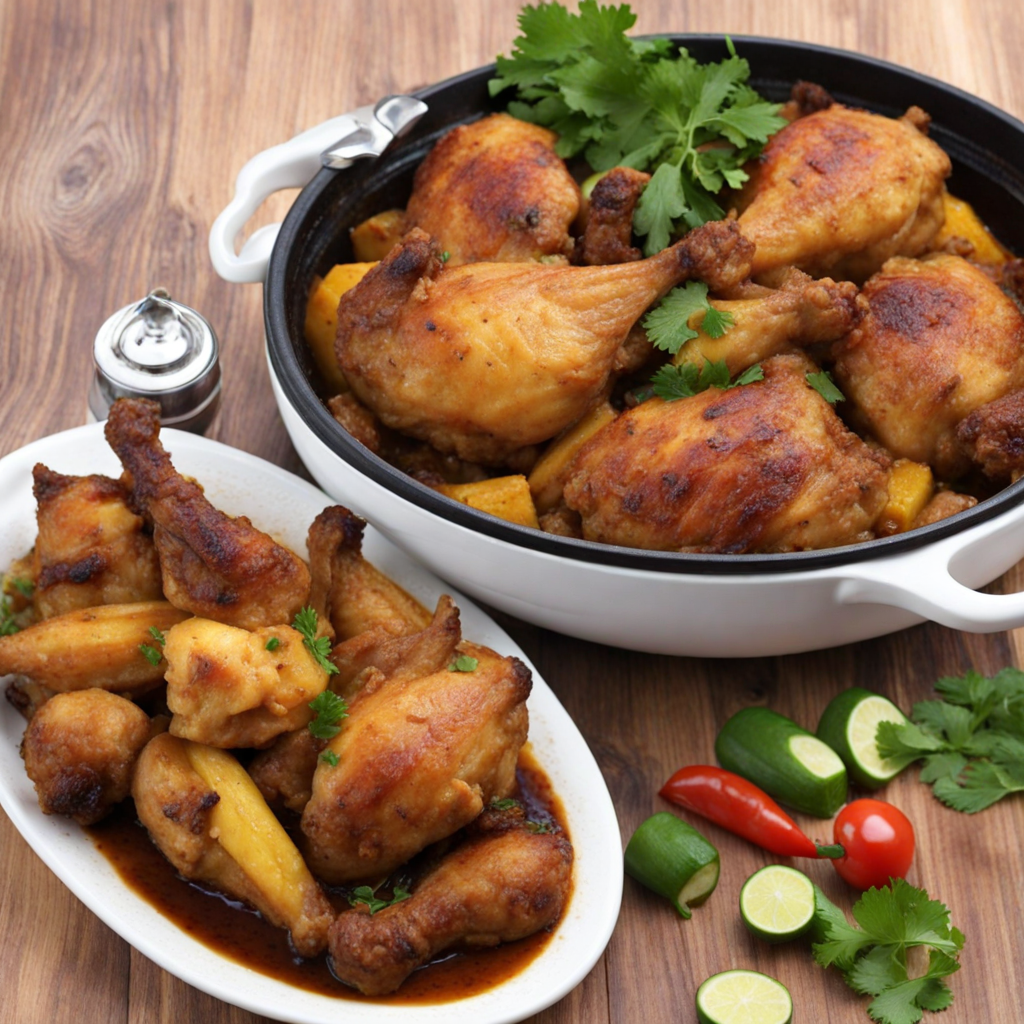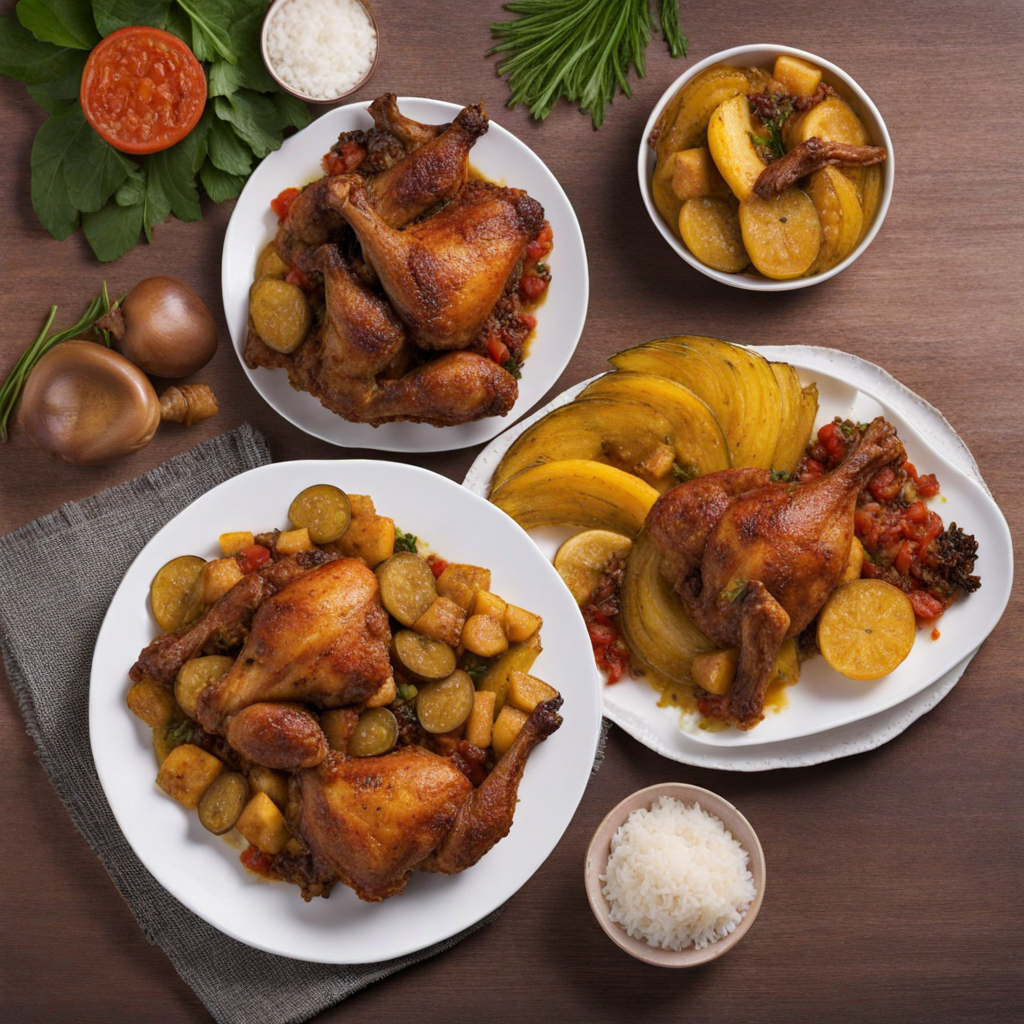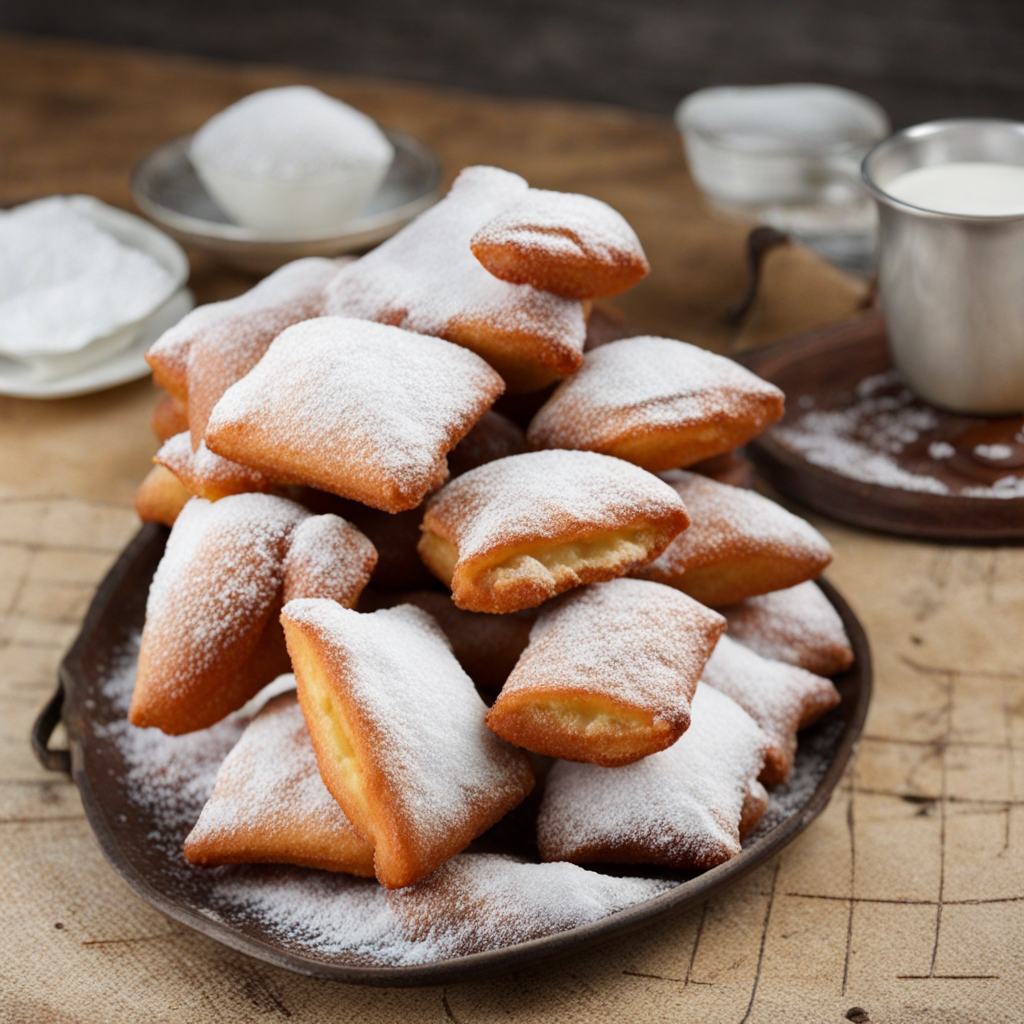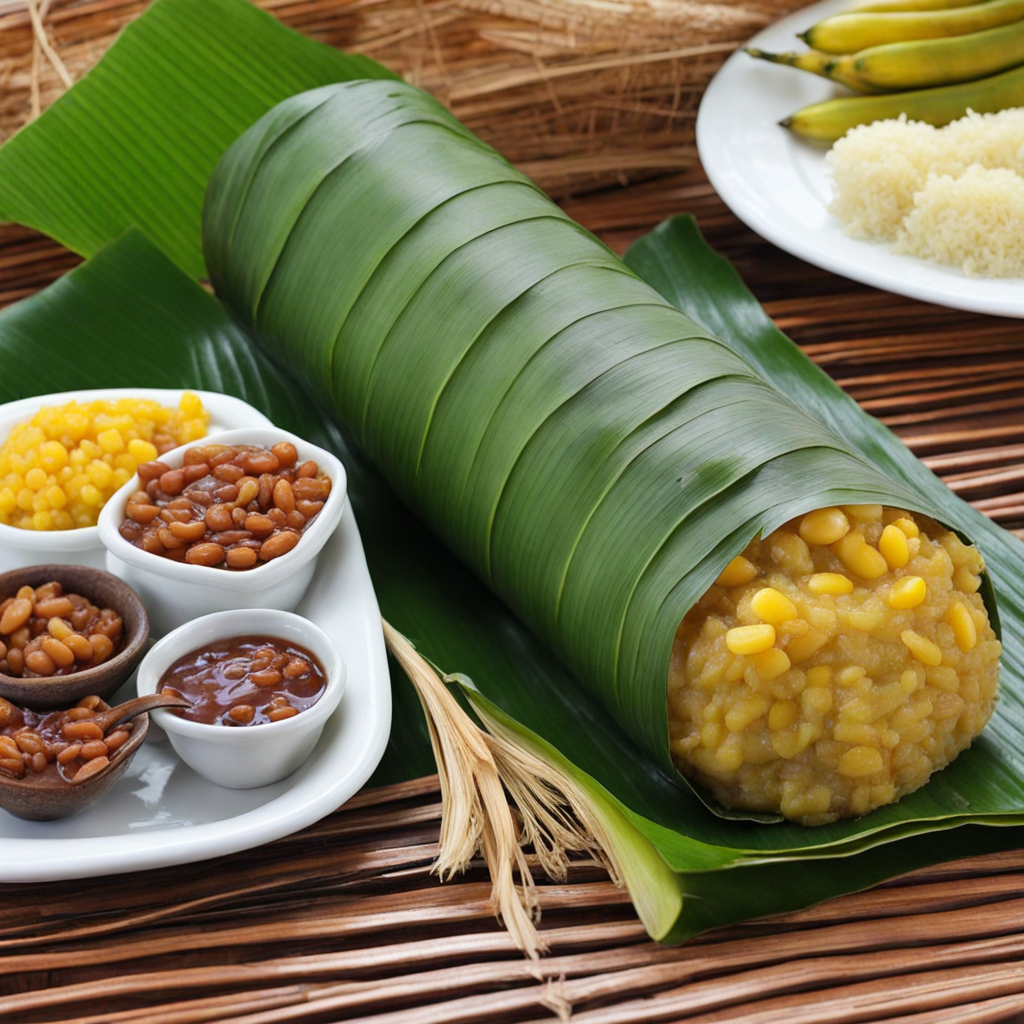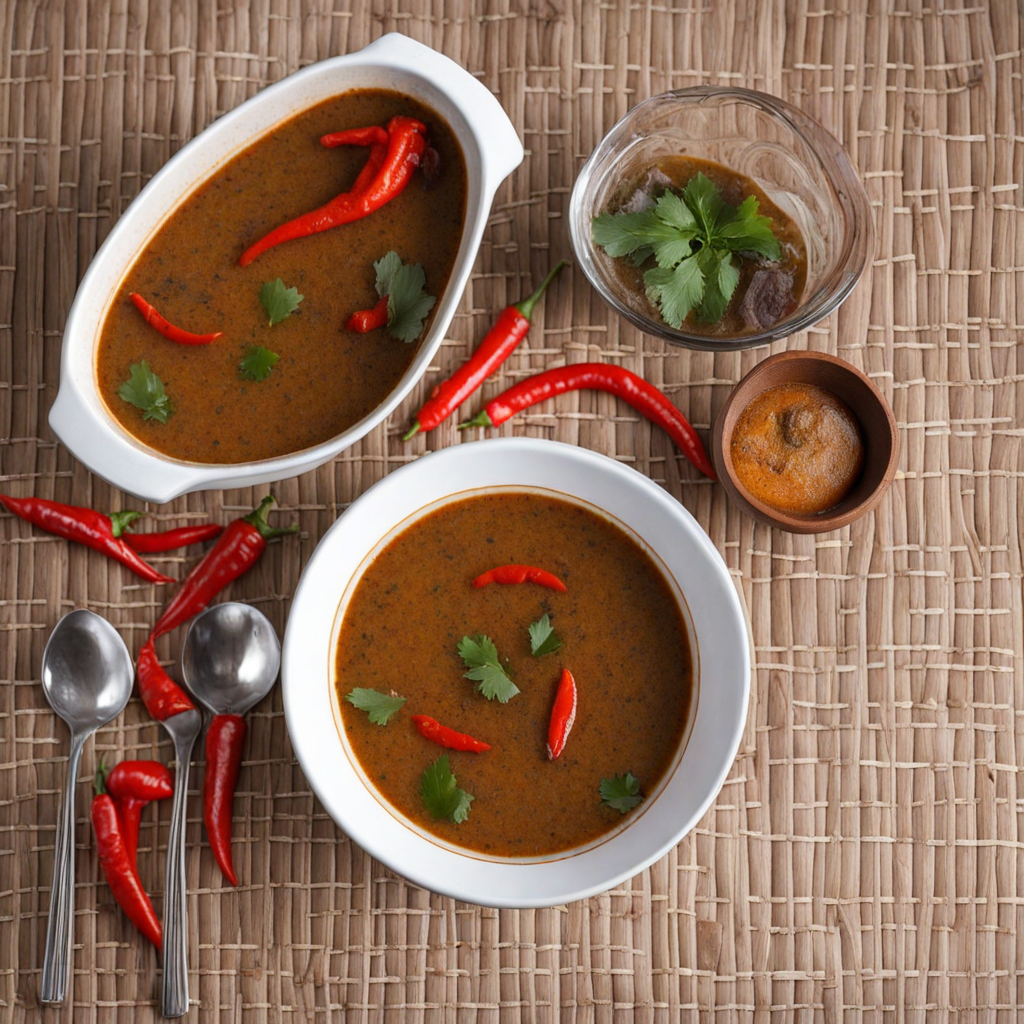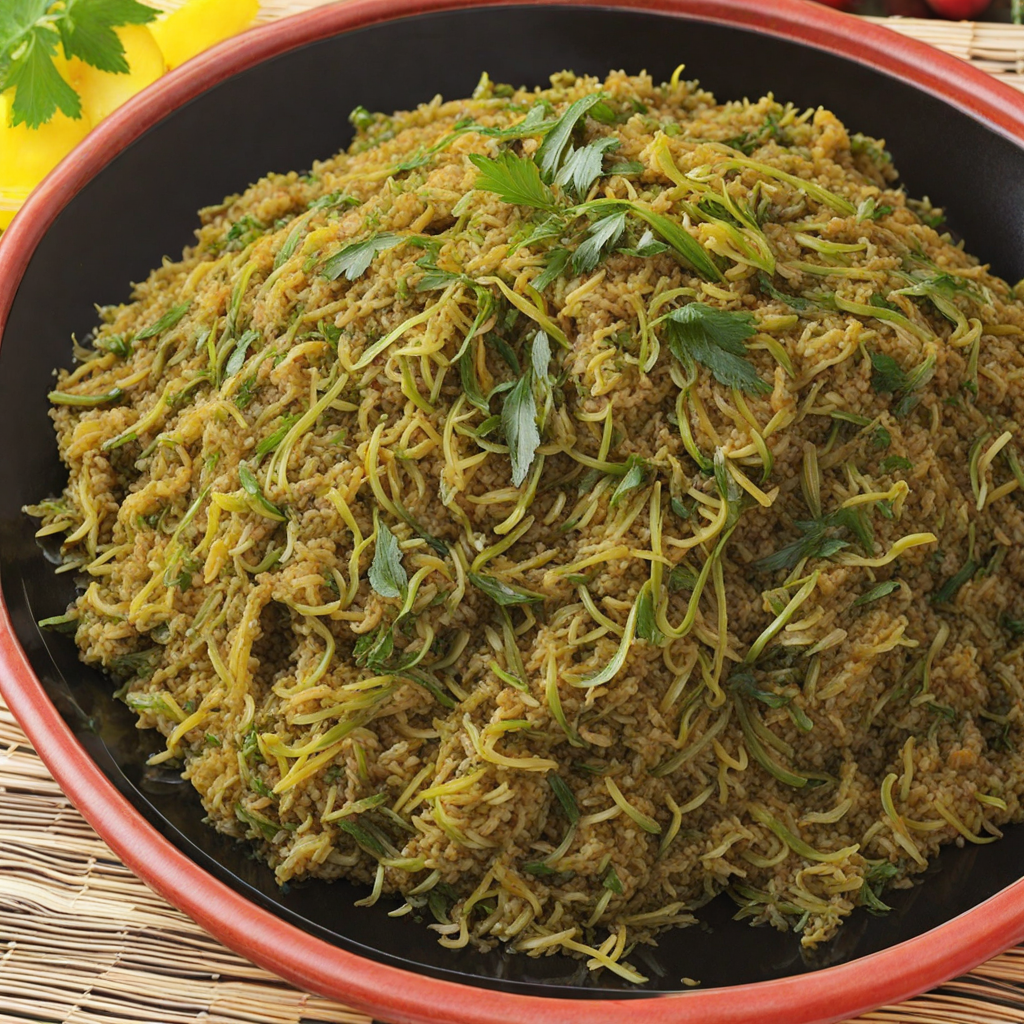Poulet DG
Poulet DG, a beloved dish from Cameroon, is a delightful representation of the country's rich culinary heritage. This savory chicken dish is often prepared for special occasions and gatherings, showcasing the vibrant flavors that define Cameroonian cuisine. The name "DG" stands for "Directeur Général," which translates to "General Director," highlighting the dish's status as a gourmet treat, usually reserved for celebrations and esteemed guests. The chicken is marinated in a blend of spices, including garlic, ginger, and various local seasonings, allowing it to soak up the deep, aromatic flavors before cooking. Once marinated, the chicken is typically sautéed until golden brown, creating a crispy exterior that contrasts beautifully with its tender, juicy meat. The dish is then combined with an array of colorful vegetables such as bell peppers, carrots, and onions, which not only add a burst of color but also contribute to the dish's overall flavor profile. These vegetables are often sautéed alongside the chicken, allowing their natural sweetness to infuse the dish, while a touch of tomato sauce adds depth and richness, making it a hearty meal. Poulet DG is usually served with a side of fried plantains or rice, making it a fulfilling and satisfying dish. The combination of succulent chicken, vibrant vegetables, and complementary sides creates a harmonious balance of flavors and textures. As you dig in, expect a medley of tastes that reflect the warmth and hospitality of Cameroonian culture, making Poulet DG not just a meal, but an experience that transports you to the heart of Cameroon.
How It Became This Dish
Poulet DG: A Culinary Journey Through Cameroon Poulet DG, a celebrated dish from Cameroon, embodies the rich tapestry of the country’s culinary heritage, combining flavors, traditions, and cultural influences that reflect the diverse communities within its borders. This dish, which translates to "Director General Chicken," offers more than just a meal; it tells a story of social status, community bonding, and the evolution of Cameroonian cuisine. Origins of Poulet DG The origins of Poulet DG can be traced back to the bustling urban centers of Cameroon, particularly in Yaoundé and Douala, where the interplay of various cultures has shaped local gastronomy. The dish is primarily made with chicken, which is marinated and cooked with an array of vegetables, spices, and sometimes plantains, creating a colorful and hearty meal. The name “Poulet DG” is often associated with the notion of elegance and status, suggesting that it is a dish fit for dignitaries and special occasions. The "DG" in its name is a nod to the Director General, symbolizing the prestige that comes with the dish. It’s common to see Poulet DG served at weddings, family reunions, and festive gatherings, making it a staple in both urban and rural celebrations. Cultural Significance The cultural significance of Poulet DG extends beyond its culinary appeal. In Cameroon, food is a vital part of social identity and community life. Sharing a meal often serves as a bridge among families and friends, reinforcing bonds and fostering a sense of belonging. Poulet DG, with its rich flavors and communal nature, embodies this tradition beautifully. During gatherings, the preparation of Poulet DG often becomes a communal affair, with family members joining together to marinate the chicken, chop the vegetables, and cook the dish. This collaborative effort not only enhances the flavors but also strengthens familial ties and creates lasting memories. The act of sharing Poulet DG around a table promotes dialogue and connections, symbolizing unity and shared experiences among participants. Ingredients and Preparation At its core, Poulet DG consists of chicken, which is marinated in a blend of spices such as garlic, ginger, and sometimes chili, providing a robust flavor profile. The chicken is then sautéed and cooked with an array of vegetables, including bell peppers, carrots, and onions. The inclusion of fried plantains adds a sweet contrast to the savory elements, creating a balanced and satisfying dish. The preparation of Poulet DG varies from region to region, with local ingredients influencing its flavor. For instance, in coastal areas, seafood might be incorporated, while in the north, the use of groundnuts adds a different texture and taste. This adaptability highlights the dish’s evolution and how it reflects the geographical and cultural diversity of Cameroon. Development Over Time As Cameroon has undergone social and economic changes, so too has Poulet DG. The dish has evolved from being a meal primarily enjoyed by the elite to becoming a beloved staple for many. The rise of the middle class in urban areas has further popularized Poulet DG, with restaurants and street vendors offering their own interpretations of the dish. The globalization of food culture has also played a role in the evolution of Poulet DG. Ingredients that were once considered rare or exclusive have become more accessible, allowing for new variations of the dish. For instance, the introduction of international spices and cooking techniques has led to innovative twists on the traditional recipe, appealing to younger generations and expatriates alike. Moreover, the rise of social media has transformed how Poulet DG is perceived. Food bloggers and influencers have showcased the dish, highlighting its vibrant colors and enticing flavors, making it a popular choice among food enthusiasts both within and outside Cameroon. This exposure has not only promoted the dish internationally but has also sparked a renewed interest in traditional Cameroonian cuisine. Poulet DG in the Global Context Today, Poulet DG is emblematic of Cameroon’s culinary identity on the global stage. As the world becomes more interconnected, traditional dishes like Poulet DG serve as a means of cultural exchange, allowing people from different backgrounds to experience and appreciate Cameroonian flavors. Restaurants specializing in African cuisine often feature Poulet DG prominently on their menus, introducing it to a broader audience. This visibility not only helps to preserve the dish’s legacy but also encourages culinary tourism, drawing food lovers to Cameroon to experience the authentic flavors firsthand. Conclusion In conclusion, Poulet DG is much more than just a dish; it is a symbol of Cameroon’s rich culinary heritage, cultural significance, and the evolution of its food practices over time. From its origins as a meal for the elite to its status as a beloved staple across various communities, Poulet DG embodies the spirit of togetherness and celebration that is integral to Cameroonian culture. As this dish continues to adapt and thrive in a modern context, it stands as a testament to the resilience and dynamism of Cameroonian cuisine. With each bite of Poulet DG, one can taste the history, traditions, and communal bonds that have shaped not only a dish but also a cultural identity that is cherished by many. Whether enjoyed at a family gathering or in a restaurant, Poulet DG remains a delicious bridge connecting the past, present, and future of Cameroon’s culinary landscape.
You may like
Discover local flavors from Cameroon


